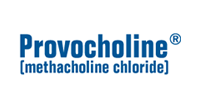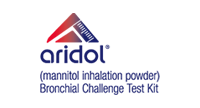Gina Hoots, MSEd, RRT-ACCS, RPFT, CCSH, AE-C, CHC
In pulmonary medicine, keeping up with the latest advancements and evidence is crucial for providing optimal care to patients with chronic obstructive pulmonary disease (COPD).
The Global Initiative for Chronic Obstructive Lung Disease (GOLD) guidelines provide evidence-based recommendations for COPD diagnosis, management, and prevention. First released in 1997, GOLD is a collaboration between the National Heart, Lung, and Blood Institute and the World Health Organization. GOLD’s objectives are to raise awareness of COPD, improve prevention and management, and encourage research. GOLD organizes World COPD Day on the third Wednesday of November to spread awareness. Since 2014, GOLD has been funded through the sale of reports and resources.
The GOLD guidelines use a combined assessment of symptoms and exacerbation risk to determine initial treatment. They propose escalating or de-escalating treatment based on symptoms like shortness of breath and frequency of flare-ups. The guidelines outline both drug and non-drug options for stable COPD, with the goals of reducing symptoms and future exacerbations. GOLD guidelines provide a framework for individualized COPD care. They aim to support clinicians and patients in achieving the best outcomes through proper diagnosis, treatment, and self management. The guidelines translate research into practical recommendations that evolve as new evidence comes to light.
In this overview of the annual revisions to the Global Initiative on Obstructive Lung Disease (GOLD) guidelines for 2024, we’ll explore key changes shaping our practice and improving patient outcomes. With over 30 years in the field, I’ve witnessed the evolution of our understanding of obstructive lung disease beyond the traditional FEV1/FVC ratio and treatment with Q4 albuterol nebs. This comprehensive 218-page document compiles volumes of research into a digestible resource for pulmonary diagnosticians worldwide and for respiratory therapists like myself.
Chapter 1: Definition and Overview
Let’s begin with the basics: understanding COPD and its implications. The GOLD 2024 report maintains the definition of COPD largely unchanged from previous years: “COPD is a heterogeneous lung condition characterized by chronic respiratory symptoms (dyspnea, cough, expectoration, and/or exacerbation) due to abnormalities of the airways (bronchitis, bronchiolitis) and/or alveoli (emphysema) that cause persistent, often progressive, airflow obstruction.” While most readers are familiar with Stage 4 / Category D / end-stage COPD presentations, new terminology and discussions have been introduced to better classify COPD. Today, we know that lung function is related to epigenetic changes in response to exposure to the environment over an individual’s lifetime. We also know that while COPD is both preventable and treatable, underdiagnosis can lead to unnecessary suffering and disease progression. This section will aim to review terminology that has changed in recent years.
Clarification of the terms Early/Young/Mild COPD:
- Early: Reflects the disease’s initial signs and symptoms.
- Young: Indicates an onset at a younger age (e.g., 20-30s).
- Mild: Describes the degree of obstruction present.
Pre-COPD: Normal spirometry but with symptoms and risk factors present.
PRISm: Preserved Ratio but Impaired Spirometry. Expands on individuals with low FEV1 and symptoms, despite preserved ratio, often associated with increased cardiovascular risk and potential transition to obstruction over time.
Hyperinflation: While not a new term, hyperinflation has new importance in the 2024 document. Hyperinflation is characterized by elevated lung air volume compared to normal, associated with dyspnea, impaired exercise tolerance, and increased mortality, even in individuals with mild obstruction.
Chapter 2: Diagnosis and Assessment
Diagnosing and assessing COPD require a comprehensive approach, and the 2024 updates provide insights into refining this process. Notable updates include clarification on pre-bronchodilator spirometry, enhanced screening methods, and updates on assessing blood eosinophil count for a more nuanced understanding of COPD diagnosis and assessment. Many charts and algorithms are presented for clarity and easy of reference.
Spirometry Update:
- Recommends post-dilator testing for diagnosis, clarifying that post-bronchodilator testing may not be necessary if obstruction is absent pre-dilator.
- Ongoing follow-up is warranted if obstruction is present with responsiveness due to increased risk of developing fixed obstruction in the future.
- Large-scale screening programs for the general public are not recommended, but screening for persons at risk for COPD is advised.
Update: Other Diagnostic Tests
- Lung cancer screening may offer an opportunity for COPD screening due to shared risk factors.
- Blood eosinophil elevation is associated with responsiveness to inhaled corticosteroids.
- Interstitial lung abnormalities are addressed, and presence of findings raise concern for poor outcomes.
Chapter 3: Prevention and Management of COPD
Preventing symptoms and managing risks are central to COPD care, and the 2024 updates provide a roadmap for optimizing these efforts. Previously separated into two chapters, this chapter was merged to reduce redundancies. With a renewed focus on smoking cessation strategies, including pharmaceutical options, the guidelines emphasize evidence-based, holistic approaches despite challenges such as continued smoking among approximately 40% of diagnosed COPD patients.
Smoking Cessation Update:
- All smokers should be strongly advised to quit using supportive strategies.
- Nicotine replacement and pharmaceutical support are widely available.
- Cognitive behavioral therapy and goal setting are effective non-pharmaceutical strategies.
Inhaled Medication Update:
- Stress on individualized medication selection based on ability and choice.
- Utilize assessment criteria, inhalation strength, breath hold, manual dexterity, and insurance coverage.
- Emphasizes minimizing the number of devices and utilizing effective device education.
- Discussion of factors such as once-daily dosing may create improved adherence.
Non-Pharmacological Updates:
- Aligns vaccination recommendations with CDC guidance.
- Recommends the use of hospice, palliative care, and tele-health.
- Highlights non-pharmacological therapies such as oxygen and pulmonary rehab, stressing personalized treatment approaches tailored to individual patient needs.
Chapters 4-6: Management of Exacerbations, COPD and Comorbidities, and COVID-19 and COPD
These chapters have no major updates and continue to address the challenges posed by exacerbations, the complexity of COPD comorbidities, and the unique considerations of COPD management in relation to the COVID-19 pandemic. The chapter on co-morbidities covers an extensive list which reinforces the need to monitor patients closely as multimorbidity causes complex medical management.
What You Can Do
- Assess your COPD patients using the new guidelines to determine the right treatment path.
- Educate patients on self-management, risk reduction, and the importance of medication adherence and follow-up care.
- Follow up regularly to evaluate if treatments need adjustment to gain control of symptoms and reduce exacerbations.
- Promote regular pulmonary rehabilitation attendance.
- Encouraging shared responsibility is important as patients and providers together can optimize COPD management and outcomes.
In conclusion, the 2024 updates to the GOLD guidelines for COPD reflect the latest evidence, with seven pages of references added this year alone. By embracing these updates and integrating them into our practice, we can elevate the standard of care for COPD patients, empowering them to lead healthier, more fulfilling lives. Health coaching is a relatively new area in which health care providers are uniquely positioned to make yet another positive difference on outcomes in persons with COPD. As respiratory therapists, we are at the forefront of change, driving progress and innovation in the pursuit of better respiratory health for all.








